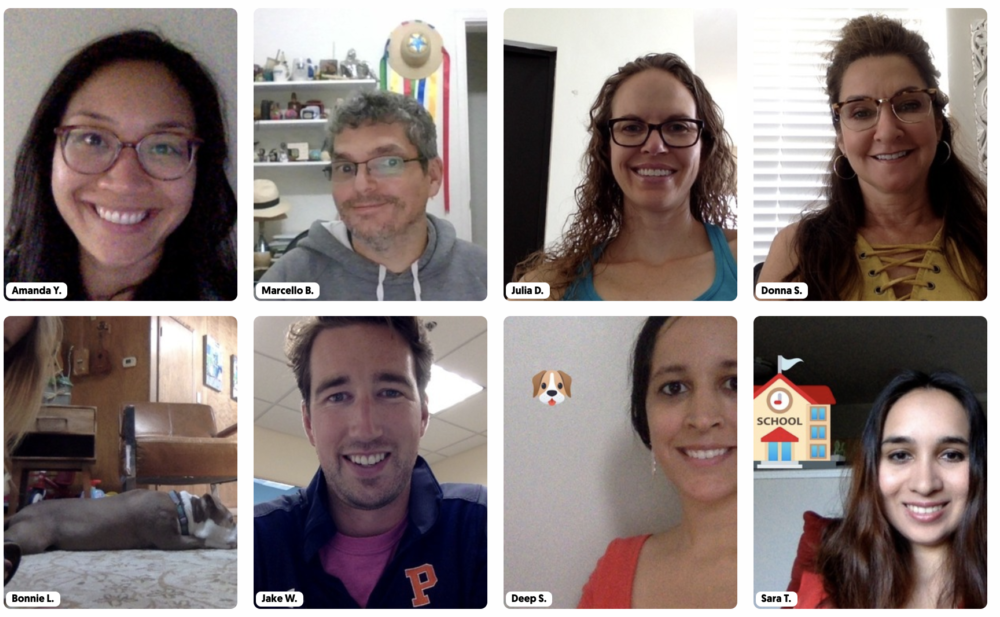23 Resources for Rethinking Time and Place in Schools
Time and place are often the fixed parameters within which innovation can take place. The length of the school year, the schedule of the school day, or the minutes in a class period determine content purview and pacing; the school campus, classroom specs, and furniture arrangement provide the context within which we teach and learn.
Our team decided to challenge this premise in our one week professional learning Rethinking Time and Place course. The course generated over 2000 pageviews, and had 50+ participants from 13 countries and 35+ schools. The course also created opportunities for participants to learn from one another, explore a curated playlist, and create their own plans for shifting existing structures in their classrooms.

Here, we have curated some of our favorite resources for Rethinking Time and Place:
23 Recommended Resources for Rethinking Time and Place
- A Practical Guide to Common Bell Schedules (toolkit). Here you can navigate and examine a variety of common bell schedules in schools.
- Can Flexible Classrooms Boost Student Achievement? (video). “The video made me wonder if we have been paying enough attention to how we organize our classrooms, or if we have been just remodelling spaces without taking into consideration the goals we want to achieve.” Marcello Bulgarelli, Graded School
- Five Surprising Results of a Self-Paced Classroom (article). This post on the ISTE blog takes a look at one potential strategy for teachers in rethinking time by designing for a self-paced classroom where students can design their own learning experiences.
- Make Space (book) by Scott Doorley & Scott Witthoft. “Here there are all kinds of cool solutions and experiments with design for collaboration and individual work spaces.” Kathleen Ralf from Frankfurt International School
- Making the Most of a 90 Minute Block (podcast). “Listening to Jennifer Gonzalez’s podcast reiterated to me a foundational piece of rethinking time and space. She mentioned that having clearly identified ‘power standards’ or ‘essential learning targets’ are critical components of being flexible with time and responsive to student needs. Every classroom teacher has a slew of standards for their course, but without identifying those that are essential in order to move on to the next levels teachers cannot rethink their time and pace in the classroom.” Julia Dennis from American School Foundation of Monterrey
- New and Different Ways Schools Innovate with Time (toolkit). Unlocking Time’s robust playlist lays out several topics around rethinking time, provides a description of each of the topics, and a video or article illustrating the strategy in action.
- Noble High School: Spotlight on Knight Time (video) This video takes a look at an example of how a school that transitioned to competency-based learning made adjustments to a traditional schedule.
- PeerGrade or Calibrated Peer Review (resources). “To try to have more frequent formative assessment while not 'losing' as much class time, I am curious about trying peer review software like PeerGrade or Calibrated Peer Review (from UCLA), at least occasionally. I haven't worked out really any of the details, but this would involve peer review that I could monitor occurring outside of the classroom.” Paul Natland from Ransom Everglades School
- Pivot Interactives (resource). “There are also online video analysis platforms where students can perform lab analysis at home (e.g. Pivot Video Analysis) that I hope to explore a bit this year. Paul Natland from Ransom Everglades School
- Rethinking Use of Space and Time for Next Generation Schools (article). This article synthesizes key tips from Next Generation Learning Challenges and 2Revolutions’ Reimagining Space, Time and Staffing, with a focus on providing examples of schools changing student experience without overspending.
- Scheduling for Learning, Not Convenience (article). This is a Getting Smart piece that examines the underlying structures and strategies for flexibility and an exploration of the four characteristics of effective schedules.
- Seven Ways Technology Can Deepen, Not Cheapen, Place-Based Learning (article). GOA’s own Eric Hudson shows the compatibility of technology with place-based learning.
- Sketchnoting Resources for Teachers (resource). “I found this set of resources that give step-by-step instructions as to how to use this strategy to save students time by taking more effective notes. I think this is a strategy that would work very well before a test, as it seems to pose a great method that combines individual and collaborative learning.” Amanda Young, Shanghai American School
- Slack (app). “To try to get more out-of-class collaboration on problem-solving and on some projects, I plan to utilize slack more as I think there is solid functionality and convenience (a convenient phone app, for instance).” Paul Natland, Ransom Everglades School
- The Future Of Coastal Preservation Is In The Hands Of High Schoolers (article). This article begins, “In trying to save one of the United States’ most important stretches of land from succumbing to the effects of climate change, southeast Louisiana is calling in the cavalry: 45 prospective ninth-graders.” Read to learn more.
- The Space: A Guide for Educators (book) by Rebecca Louis Hare and Robert Dillon. “This book works more like a design journal where you can begin to document your decision making process with students to design your space. Great provocations here to get started in the work.” Kathleen Ralf, Frankfurt International School
- Time Is an Essential Teacher Resource, So How Can Schools Be More Creative With It? (article). “I appreciate Schwartz's description of creating the student schedule as a result of their needs, and think that teachers working together in teams can improve outcomes for in academic areas AND improve social emotional aspects of school.” Amanda Young, Shanghai American School
- Time, Space, and Technology (playlist). XQ provides a playlist of resources on how schools can rethink when, where, and how learning happens, including the role online spaces can play.
- Transforming Spaces to Inspire Powerful Learning (podcast). Getting Smart’s Emily Liebtag interviews Danish Kurani, a learning space architect and professor at Stanford and Harvard University, who delves into how schools are transforming their spaces and cautions against the pitfalls to avoid.
- 12 Ways to Upgrade Your Classroom Design (podcast). Cult of Pedagogy’s Jennifer Gonzalez interviews Bob Dillon, a former middle school principal who now works as a director of innovation for a St. Louis-area school district. They offer small, concrete steps teachers can take to redesign their classroom space without spending a lot of money. Transcript and written recap also available.
- Using Creative Classroom Design to Promote Instructional Innovation (article). This article profiles a Long Island school district that made changes to support more flexible learning spaces in its rethinking of place.
- Using Student Shadow Days for Ethnographic Research (article). This article shares how St. Margaret’s Episcopal School prioritized empathizing through ethnographic research as a part of their strategic plan. They found that student shadow days offered valuable insight into how students experience a day at school.
- What is Place-Based Education and Why Does it Matter? (article). “I absolutely loved [this] article. I feel like the article spoke to me as a learner and as a teacher. Some of the best lessons I feel like I teach are not in the classroom at all, rather around campus or off campus.” Robert Ford, Gilman School
Short on time or cramped for space? We hope that these resources can offer you some creative solutions to rethink time and space in your classroom or at your school. Let us know on Twitter @GOALearning.
Interested in joining us for a future Rethinking School course? Featuring ALL NEW panelists and resources for 2019-2020, our Rethinking School series is back! Register for Rethinking School today.
